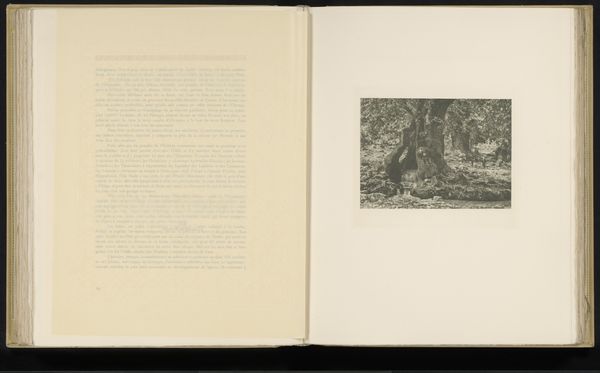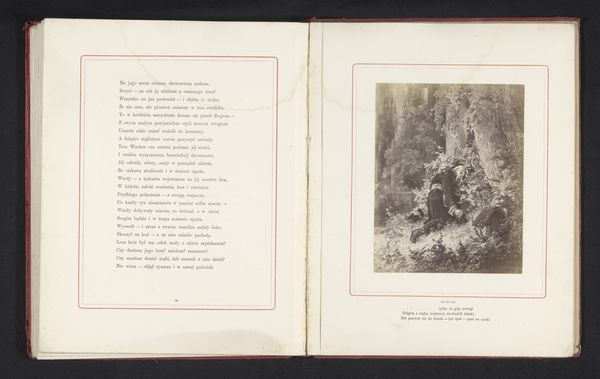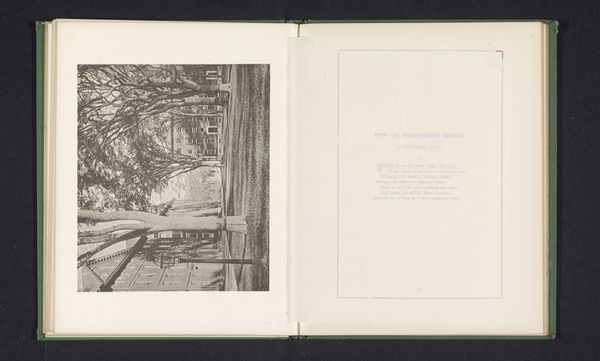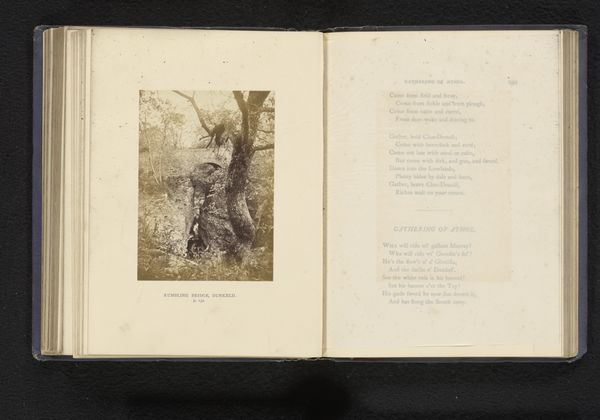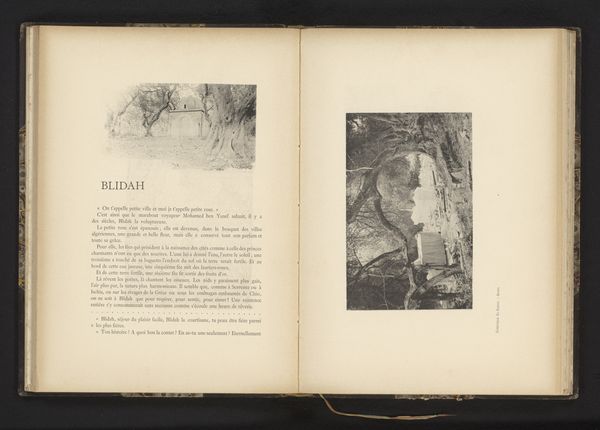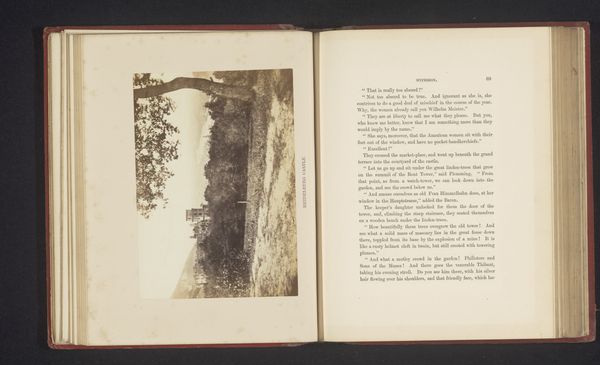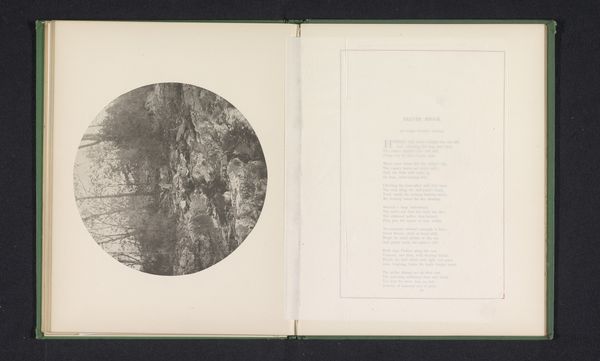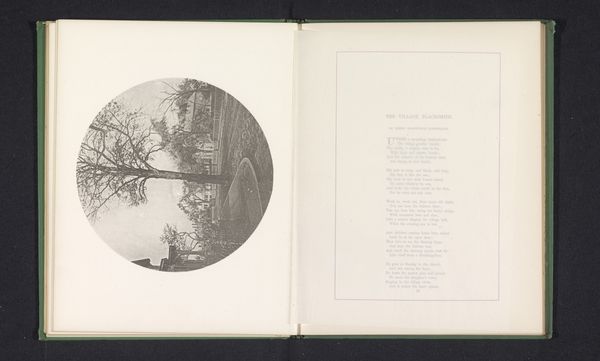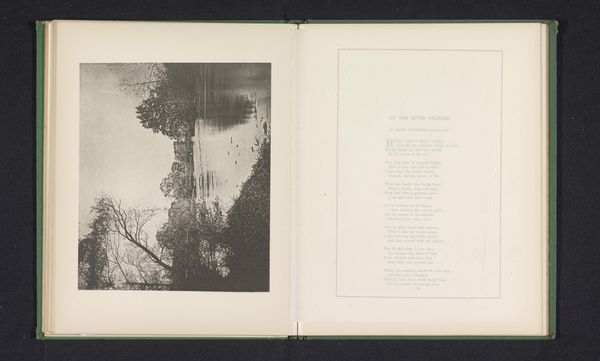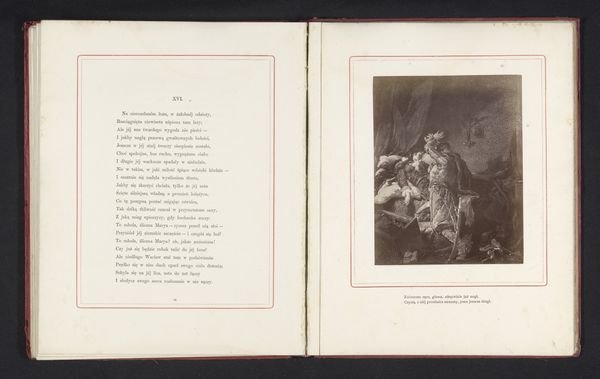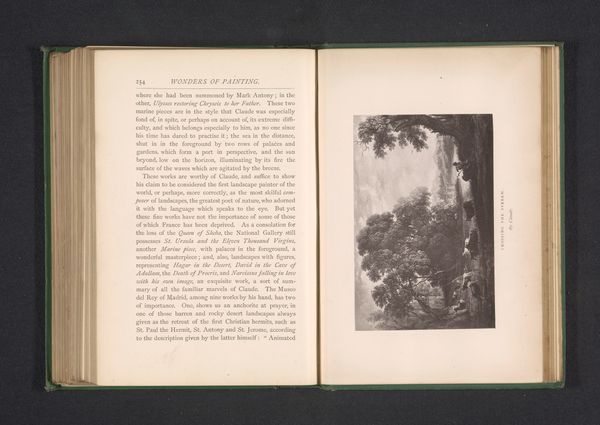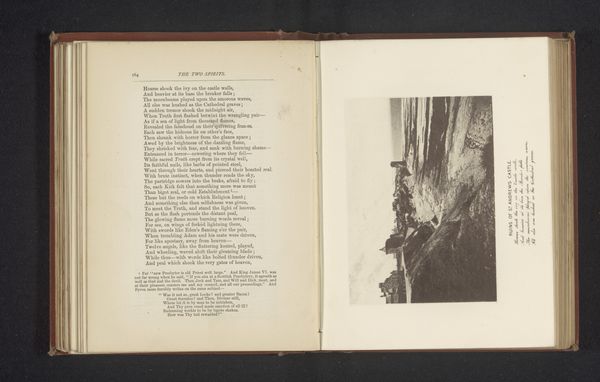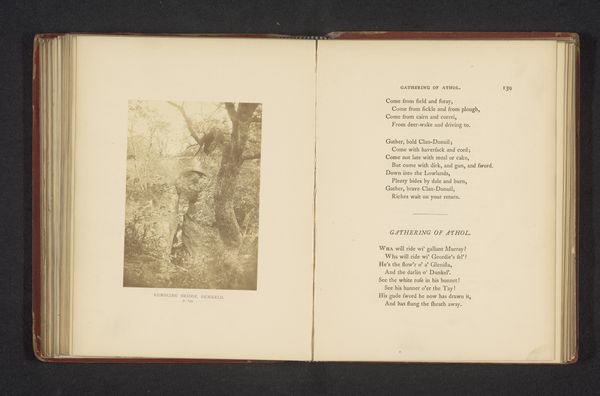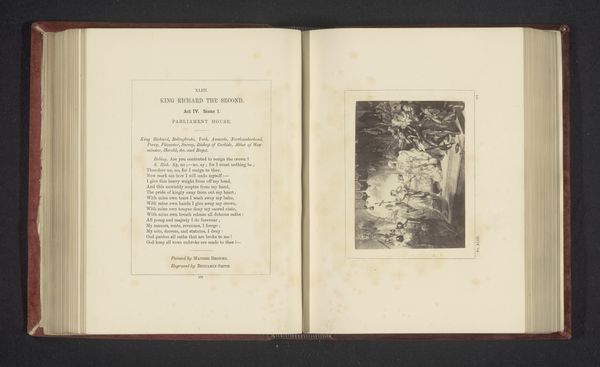
Dimensions: height 117 mm, width 180 mm
Copyright: Rijks Museum: Open Domain
Curator: Before us we have a gelatin-silver print from before 1876 titled "Eiken te Cambridge" by William James Stillman. Editor: It has an almost eerie stillness. The monochromatic tones coupled with the mirroring effect create a tranquil yet haunting atmosphere, don't you think? Curator: Absolutely. Considering Stillman's deep engagement with the Pre-Raphaelite movement and his personal friendships with figures like Ruskin, this print transcends a simple landscape. It speaks to a broader interrogation of truth, nature, and the anxieties of the Victorian era, where industrialization began disrupting agrarian societies. Editor: From a purely structural perspective, the verticality of the trees contrasts magnificently with their horizontal reflection, bisected by what appears to be a fallen trunk. Note the precise balance achieved within the pictorial space, almost reminiscent of classical compositions. Curator: I agree. Yet, for me, it’s essential to consider Stillman's position as an American expatriate and his evolving relationship with the European landscape. His artistic choices might represent an attempt to find stability and meaning in an era of significant social transformation and global expansion. What could the symbolism of a fallen trunk suggest in this framework? A fall of empires? The mortality of societies predicated upon specific power structures? Editor: Those layers of interpretation are definitely present. Still, I cannot overlook how he renders light and shadow. The way the diffused light penetrates through the trees and is mirrored, fragmented, on the water surface introduces such a complex visual game. It’s fascinating to observe how light itself becomes almost sculptural, defining shape and depth. Curator: Thinking about audiences for photographs like this at that time – upper-middle-class homes displaying such scenes. One could examine it as an object that offers commentary on class, on property, on colonial narratives and an idealized vision of nature that often obscures labor and social inequalities. Editor: Well, it seems we are at an impasse, as always. Still, I cannot help but acknowledge the striking sense of harmony present in "Eiken te Cambridge". Curator: And I must admit to finding resonance in its reflection on power dynamics and cultural memory, urging one to seek a more complex truth.
Comments
No comments
Be the first to comment and join the conversation on the ultimate creative platform.
